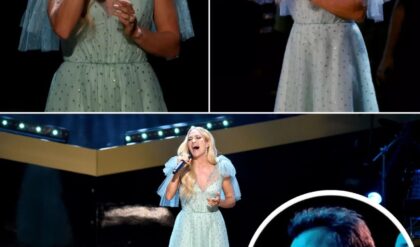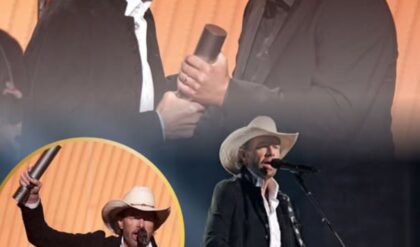The Ghost With the Most almost went tropical.
That’s what Warner Bros. was shouting all the way to the bank back in 1988. The studio was keen to capitalize on the newly minted pop culture icon, and so various ideas were floated for a sequel, the most infamous of which was entitled Beetlejuice Goes Hawaiian, a name that has struck cringe in the hearts of fans for years.
But here’s the thing I’m more than willing to say… it could’ve been great.
Consider director Tim Burton’s filmography. It’s full of ideas that seem diametrically opposed: a Frankenstein-esque monster with scissor hands adjusting to life in bubblegum suburbia, a Halloween takeover of Christmas, and a hero’s journey in search of his bicycle, just to name a few. Perhaps Beetlejuice could have pulled off a similar trick in Hawaii.
Today, as a sequel finally approaches in Beetlejuice Beetlejuice, we’re going to breach the development limbo that trapped the unlikely Beetlejuice follow-up, the quirky subgenre that was a shockingly perfect fit, and why the Hawaiian script had Burton so juiced up. So slap on your swimsuits, because we’re diving head-first into the putrid waters of Beetlejuice Goes Hawaiian.
Beetlejuice and Being Too Weird To Exist
Beetlejuice is such a specific movie. There’s really nothing else like it. Its combination of gothic horror, romance and comedy coming together on screen in a blend truly unique to Tim Burton, and frankly, it’s surprising that such a unicorn even exists. Even the studios were dubious. So how’d he get it made in the first place?
Following the massive success of Pee-wee’s Big Adventure, which pulled in $40 million on a $7 million budget, Burton had his pick of what his next project would be, and so Warner Bros. invited the filmmaker to direct their next big theatrical hit… Hot to Trot, starring John Candy as a talking horse.
Burton hard-passed on that one, setting his sights a little higher, specifically on the Bat-signal in the skies above a gloomy Gotham City. The studio, however, wasn’t quite sold on Burton’s dark gothic take on the caped crusader, but soon after getting the brush-off for his Batman idea, Burton came across a strange little script called Beetlejuice, courtesy of producer David Geffen.
Do you really think that’s a good idea? Is that really the message you want to be sending to the teenagers of the world? Die in a fire?
We all know the 1988 original like the back of our skulls. The Maitlands find themselves dead and trapped in their former home with the eccentric Deetz family. When the Maitlands fail to scare the Deetzes out of the house, the ghosts seek the aid of a mischievous and unpredictable bio-exorcist and, in the original screenplay from Michael McDowell and Larry Wilson, the plan culminates in a supernatural wedding showdown in which Lydia dies tragically in a fire, joining the Maitlands in a happily ever afterlife.
“A couple of people said to us,” Larry Wilson recalled to Yahoo, “‘Do you really think that’s a good idea? Is that really the message you want to be sending to the teenagers of the world? Die in a fire?'”
The early drafts featured darker elements that were eventually smoothed out for a lighter, more comedic tone befitting the works of Burton to that date. When the final draft came around to the ending we all know, with the Deetzes cohabitating with the Maitlands, Wilson began to fantasize about what these characters might endure while living with the dead, and thus, the seed of a sequel was planted.
“Mr. Deetz would have developed a crush on Geena Davis’s character,” said Wilson. “That would have been my idea. It would have been driven by character and not driven by a premise.”
You can see the potential there. Sequels dictate a world expansion to make room for the new story. Marital strife might facilitate a Neitherworld marriage counselor – one who specializes in dead-end relationships, of course. And what bureaucratic rules might be at play, given how marriage is seemingly important in this world as it is, for some reason, the only way Beetlejuice can get out of the afterlife. It would have been great to get some clarity on that, but Wilson’s idea never grew into a first draft.
New Beetlejuice Beetlejuice Official Trailer Screenshots
10 Images
Although the original Beetlejuice was a smash success for writers Wilson and McDowell, they didn’t achieve the final draft by themselves. By 1988, Burton believed his writers were “burnt out” and so he brought in a “fresh fighter” in the form of script doctor Warren Skaaren who, according to Burton, made significant contributions.
“Originally Lydia, the key character in many ways, the portal for so many people, had a sister,” Burton said in his book Burton on Burton. “She was the goth, the sister was the straight one. Warren got rid of the sister, and what a good decision because then it all became about Lydia. That’s the [change] I remember most vividly.”
Skaaren also played a major role in defining the Beetlejuice character. He mined Native American trickster archetypes to transform the character from a humorless, murderous, winged demon in the early drafts into a scene-stealing, maniacal scoundrel. According to Alison Macor’s biography of the journeyman script doctor, tweaking the Ghost With the Most was a highlight for Skaaren: “He was proud of helping shape a character who on the page in some of those early drafts had been unlikeable and not accessible at all to the average viewer.”
It’s no surprise Skaaren harbored a lot of love for the character, nor is it that the studio charged him with writing a sequel that he titled Beetlejuice in Love. That script likely drew inspiration from Andrew Lloyd Webber’s Phantom of the Opera, which hit Broadway the same year Beetlejuice arrived in theaters.
In Skaaren’s sequel, Beetlejuice has a new mark, Leo, an opera singer who tragically dies while proposing to his girlfriend, Julia. When Leo enters the afterlife, Beetlejuice manipulates the star-crossed lover into an opportunity to return to the mortal world where he can get hitched. What ensues is a madcap melodrama that ends with the singer reincarnated as a baby and put into his girlfriend’s care.
By 1990 though, Burton had his hands full – one year into producing the Beetlejuice cartoon and knee-deep in the dark alleys of Gotham with Batman Returns – and Warren Skaaren passed away shortly after finishing his draft of Beetlejuice in Love, a script that, needless to say, joined the dusty halls of the undeveloped. And so just two years after the original hit, there was no clear picture of what a follow-up to Beetlejuice might be.
A Sequel With a Side of Beach Party, Please
Like the determined titular Ghost With the Most, however, the idea of a Beetlejuice sequel wouldn’t stay buried. As far as the studio was concerned, there was still gold in them thar hills in the early ’90s, and if another writer could pan some of that treasure, the possibility was still shaking its body line, as Harry Belafonte would have it.
Tim thought it would be funny to match the surfing backdrop of a beach movie with some sort of German Expressionism.
“
According to Burton’s collaborator and uncredited Batman writer, Jonathan Gems, “Tim thought it would be funny to match the surfing backdrop of a beach movie with some sort of German Expressionism because they’re totally wrong together.”
Given Burton’s track record, that makes absolute sense. The clash between bleak and tattered monochrome with bright and whimsical colors has always been a trademark of Burton’s style, one that hadn’t always been met with understanding. Burton’s ideas have a long history of encountering skepticism, with projects deemed “risky” by studio execs and marketing departments. In fact, the only reason Edward Scissorhands ended up at 20th Century Fox was because Warner Bros. dropped the project, fearing it was too weird for broad appeal.
Tim Burton’s love for the unconventional proved a linchpin in his professional relationship with Gems, a British playwright whose works bore titles like The Tax Exile, Naked Robots, The Paranormalist, and Susan’s Breasts. The plays blended satire and dark comedy, prompting Burton to bring Gems on as a contributor to the Batman script where Gems saw firsthand how Burton could blend contrasting elements. From there, Gems was willing to take a leap on the strange alchemy of Beetlejuice Goes Hawaiian, and began trying to flesh out this wild hair of a concept into a script.
Gems’s premise is pretty straightforward. A few years after the events of the first film, the Deetz family travels to Hawaii to develop a luxury resort, which disturbs the island’s ancient spirits, prompting an opportunity for Beetlejuice to return. The story is told from the point of view of Lydia, but the script gives a lot more screen time to the afterlife’s leading bio-exorcist compared to the 17 minutes he gets in the original film. In fact, Gems’s sequel begins with a day in the life of Beetlejuice. Still stuck in the afterlife, he shares an apartment with his wife, Rita, a burn victim with nine fingers, who Beetlejuice denigrates and humiliates.
The script expands on the world of the afterlife as he commutes to his lowly janitorial job in a ghoulish supermarket. Why do ghosts need a supermarket? I dunno… but they’ve got one. The Neitherworld’s misery, however, gives way to the bright landscape of Hawaii. To pull this combination off, Gems looked to a particular slice of 1960s cinema for inspiration: the lively subgenre of the beach party movie.
Beetlejuice Goes Hawaiian hangs 10 on the tropes found in beach party movies. These films often portray teenagers as independent and fun-loving, seeking adventure and romance away from the watchful eyes of adults. This wave of teen-centric films kicked off with Gidget in 1959, a young girl’s journey of self-discovery amidst the backdrop of a male-dominated surf culture. While Gidget laid the foundation, it was the Beach Party movies starring Frankie Avalon and Annette Funicello that truly honed the genre’s signature tropes – breezy romances, catchy musical numbers, and comical antics.
And this is where Beetlejuice Goes Hawaiian starts to make a weird amount of sense. Romance, musical numbers, and comical antics make up some of the best scenes of the original film. The beach party backdrop amplifies what the original already established. The original Beetlejuice features a plot of forced matrimony, and so the sequel further complicates the same martial plot with a more tangled romantic web, befitting of a teen beach romp.
Rita desperately seeks Beetlejuice’s affection, but he still pines for Lydia, who has eyes for an idealistic surfer named Kimo. Later in the script, Beetlejuice charms Lydia enough that it becomes plausible they could have a real connection, despite his perversions and, you know, overall grossness. It’s got the same emotional stakes as the 1961 sequel Gidget Goes Hawaiian, where she’s torn between the boy-next-door and the wealthy vacationer.
Much like the dynamic of Lydia’s relationship with her parents, the beach party genre generally depicts adults as antagonistic to the wants of the youth. In 1964’s Bikini Beach, the beach gang faces off against a wealthy industrialist, Harvey Huntington Honeywagon, who views them as a public nuisance and an embodiment of generational moral decline. Honeywagon’s primary goal is to reclaim the beach and convert it into a retirement community. Similarly, Kimo and his friends protest the Deetz’s lavish hotel. When they can’t get a meeting with Mr. Deetz, they resort to kidnapping him, landing them in jail. So bogus!
But rebellion not only plays a part in the beach genre’s interpersonal conflicts, it also plays into a character’s inner growth as well. Lydia, now in college and feeling directionless, is given an arc of self discovery. First, she rebels against her family’s greed to save the island. She seeks out a local shaman and harnesses supernatural powers of her own, then astral projects into the Neitherworld, where she journeys to find Beetlejuice and scores him a new bio-exoricist license. In exchange, he agrees to help save the island, all under an ironclad contract Lydia writes to protect her from another sham wedding. It’s an empowering arc that shows how much she has matured since the first film.
Beetlejuice on the other hand hasn’t matured one iota. He conjures a bikini bombshell to get between Lydia and Kimo. He transforms both himself and Lydia into mermaids for a date at sea, and even stars in his own self-serving musical number. When none of that works, he makes a sleazy deal with the local spirits and slips her a love potion, breaking his contract and landing her in yet another marital kidnapping plot.
The madcap schemes that play out during Beetlejuice’s romantic pursuits feel like direct pulls from the Frankie Avalon and Annette Funicello Beach Party series, all of which crank up the tropes set by Gidget to levels of genuine absurdity. The alluring beach girl is instead a mysterious mermaid. The complicated surf trick becomes a skydiving publicity stunt, and the manly outcast becomes a biker whose finger has the power to paralyze. If that isn’t absurd enough, 1965’s How to Stuff a Wild Bikini features a shaman, played by Buster Keaton, who conjures a magical bikini-clad woman to keep other guys away from Frankie Avalon’s girlfriend.
Beetlejuice’s finger-snapping magic doesn’t seem out of place in a genre like that. It seems perfectly reasonable for him to disguise himself as Texas Tycoon Monty Exxon and earn the Deetz’s approval by winning a surf competition.
With Lydia firmly under Beetlejuice’s spell, the script digs up the original film’s wedding climax, this time with a Blue Hawaii makeover. But wait, if the sequel doesn’t feature the Maitlands, who’s gonna stop the wedding!? Sounds like the perfect time for another beach party trope: the celebrity cameoooooo!
Beetlejuice’s mother interrupts the ceremony to stop her son from foolishly breaking Lydia’s contract, which would have been met with a Neitherworld punishment worse than death. It’s a deus ex machina ripe for a celebrity cameo. Bette Midler? Shirley MacLaine? Oh, oh! Kathleen Turner would have been great!
The End Is Just the Beginning of the Afterlife
The script climaxes with Beetlejuice making due on his contract by raising hell on the island, scaring the rich tourists away, which, while an obvious narrative necessity, actually plays with another Beach Party trope: the chaotic fight scene. But while these films would cartoonishly tear up a small set, Burton would have gotten the chance to indulge in even more puppetry and animation than the original.
As wild as this script is, Burton was interested in developing it further. Impressed with Daniel Waters’ work on Heathers,’ Burton approached him for a round of rewrites. Ultimately, however, he instead signed Waters to write the script for Batman Returns.
Beetlejuice is banished back to the Neitherworld in the Gems-penned sequel, where he mistakenly drinks the love potion intended for Lydia and falls head over heels for his wife, who no longer has to fight for his affection. Which is a… happy ending? It’s an ending for sure.
Gems, however, soon left the project in order to focus on a different Burton collaboration, Mars Attacks! By August 1993, producer David Geffen hired Pamela Norris of Troop Beverly Hills and Saturday Night Live to do a rewrite. Then Warner Bros. approached Kevin Smith in 1996, who turned it down in favor of Superman Lives, and in March 1997, Gems drove the final nail in the coffin, telling Fangoria the following: “The Beetlejuice Goes Hawaiian script is still owned by The Geffen Company, and it will likely never get made. You really couldn’t do it now anyway. Winona is too old for the role, and the only way they could make it would be to totally recast it.”
Or just wait another two decades and make a completely different sequel! It’s Hollywood, babes. Momentum is a fickle beast, and taking a risk like putting Beetlejuice into a surfing contest is a rare thing indeed. On the surface, Beetlejuice Goes Hawaiian sounds like a total misfire of an idea. But there’s no denying that the sequel would have contributed to the world-building of the afterlife, given a bold new arc for Lydia, and continued Burton’s legacy of mixing polarizing aesthetics while drawing inspiration from niche genres of the past. It’s all much more sensible than any internet forum might have you believe.
Beetlejuice will probably never get the full Hawaiian treatment. All we can do is sip a fruity cocktail, snack on some roaches and use our imagination…




